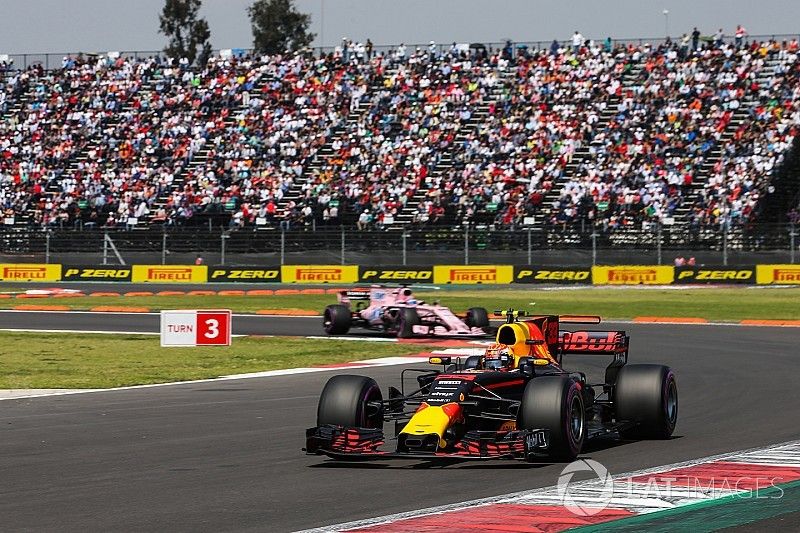Why F1 is braced for 2017's toughest race in Mexico
Formula 1 drivers are bracing themselves for the toughest race of the season so far in the Mexican Grand Prix, with the unique conditions set to take a toll on engine and brake cooling.

Photo by: Charles Coates / Motorsport Images














The unique characteristics of Mexico – with the high altitude meaning the air is less dense – makes it much harder for teams to keep the temperature of their cars under control.
Already in practice this weekend, drivers have had to lift and coast at the end of straights to protect their brakes and engines from overheating – and the situation will likely get worse in Sunday’s race.
Renault driver Carlos Sainz is expecting the situation to be especially hard.
“It is the biggest concern for all of us for the race,” he said when asked by Motorsport.com about the cooling difficulties.
“We know we were very on the limit in P2, and in the race it will be always like in Mexico – a bit of a race for survival on the reliability side.
"It is the toughest of the year. In qualifying you can have a really good time, but in the race something can go wrong.”
The cooling problems mean that running in clean air is more valuable in Mexico than elsewhere – which makes the fight for the front at Turn 1 especially important.
Daniel Ricciardo said: “We can’t be on someone’s gearbox for 20 laps. I think it should suit us, obviously if we get close we try and attack straight away, but there’s going to be management of brakes and cooling."
Mercedes, whose drivers are starting on the second row behind Sebastian Vettel and Max Verstappen, are hopeful that they have done enough to keep their cars under control."
Motorsport boss Toto Wolff said: “We have tried to prepare as good as possible and consider the conditions. But it is certainly going to be difficult for all the competitors in terms of engine cooling and brake cooling.
"I hope that we have... or think we have taken a bit of a margin and considered that.”
Renault concerns
Renault F1 managing director Cyril Abiteboul admitted that there have been some big headaches in working out how best to set up the car to cope with the unique demands of Mexico.
“I know we have concerns, so we have to be extremely careful in the way that we are approaching the race tomorrow,” he said.
He also feared that because cars could not run too close to each other, that there was a risk of the grand prix being quite boring.
“It may be a bit of a procession, I think we have that risk,” he said. “People may freeze their position and try to go to the end, because between the low overtaking probability or the high risk of running in very difficult conditions.
“If you try to attack for too long it might be that people will sort of accept their position and go to the end. We may have to do that – that is the sort of thing we go through tonight.”
Mexico unique
Williams technical chief Paddy Lowe said that the unique characteristics of Mexico – caused by the high altitude – caused many headaches for teams regarding cooling.
“It’s a tough circuit for cooling, probably one of the most difficult of the year, because of the thin atmosphere and the huge amount of braking you’ve got to do without the benefit of drag,” he said.
“With the turbo engine, unlike a normally aspirated engine which is down on power, these engines are running normal power. So you’ve got all the same heat, or in fact more, because the compressor is doing even more work.
“Then you get less cooling because there’s less air mass through the radiators, but even more heat than normal, so it’s a double whammy.
“It will require some coast management, it has been a big topic through the weekend so far. We imagine it will be a big problem for some others as well, so it’s a matter of seeing of we can play that to our advantage.
“We lift and coast everywhere, for fuel, tyres, brakes, and cooling. Probably it’s more about cooling than the other things.”
Be part of Motorsport community
Join the conversationShare Or Save This Story
Subscribe and access Motorsport.com with your ad-blocker.
From Formula 1 to MotoGP we report straight from the paddock because we love our sport, just like you. In order to keep delivering our expert journalism, our website uses advertising. Still, we want to give you the opportunity to enjoy an ad-free and tracker-free website and to continue using your adblocker.



















Top Comments